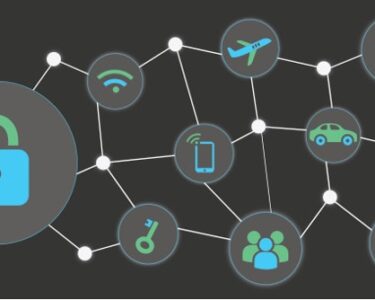
Digital Lifestyle Trends: Shaping the Future of Connectivity
The digital realm has become an integral part of our daily lives, shaping how we communicate, consume information, and even interact with the world around us. In recent years, several key digital lifestyle trends have emerged, transforming the way we live and work.
1. Smart Homes and Internet of Things (IoT)
Smart homes are becoming increasingly popular, with devices such as smart speakers, connected appliances, and automated lighting systems enhancing convenience and efficiency. IoT devices connect these appliances and systems to a central network, allowing remote control and data collection for insights and optimization.
2. Virtual and Augmented Reality (VR/AR)
VR and AR technologies are blurring the lines between the physical and digital worlds. VR headsets immerse users in simulated environments, while AR overlays digital content onto the real world. These technologies are finding applications in gaming, education, and retail.
3. Artificial Intelligence (AI)
AI algorithms are now powering a wide range of digital services, from chatbots and virtual assistants to personalized recommendations and predictive analytics. AI is automating tasks, improving efficiency, and providing valuable insights for businesses and individuals.
4. Social Networking
Social networking platforms have become an essential communication tool, fostering connections and enabling the exchange of ideas. With the rise of messaging apps and live streaming, social interactions are becoming more dynamic and immersive.
5. Streaming Services
On-demand streaming services have revolutionized entertainment consumption, offering a vast library of movies, TV shows, and music at the touch of a button. The convenience and affordability of streaming services have made them a popular alternative to traditional broadcast television and cable.
6. Cloud Computing
Cloud computing services provide access to computing resources, software, and storage over the internet. This enables businesses and individuals to access data and applications from anywhere, reducing the need for physical infrastructure and hardware.
7. Mobile Device Usage
Mobile phones have become ubiquitous, serving as constant companions for communication, information access, and entertainment. The proliferation of smartphones and tablets has made it possible to access digital content and services on the go.
8. Health and Fitness Tracking
Wearable fitness trackers and health monitoring apps are empowering individuals to track their physical activity, sleep patterns, and overall well-being. These devices provide personalized insights and motivation to adopt healthier lifestyles.
9. Cybersecurity
As our digital lives expand, cybersecurity becomes increasingly crucial. Trends like phishing, ransomware, and data breaches highlight the need for robust security measures to protect personal information, financial assets, and online identities.
10. Digital Literacy
Digital literacy refers to the ability to navigate, evaluate, and use digital technologies effectively. In an increasingly digital world, it is essential for individuals to possess the skills to make informed decisions and participate fully in the digital age.
In conclusion, digital lifestyle trends are continuously evolving, reshaping the way we live and interact with technology. These trends have the potential to enhance our lives, provide new opportunities, and address societal challenges. As the digital landscape continues to expand, it is essential to stay informed, embrace innovation, and adapt to the changing digital environment.


